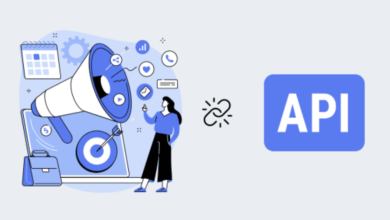
AI and Machine Learning are transforming the world around us, and nowhere is it more evident and relatable than in the much-contested world of Search Engine Optimization (SEO).
Google’s search engine ranking algorithm, for example, has been fluidly evolving for years now. In the latter parts of 2015, Google introduced an AI-based search query ranking algorithm named “RankBrain”.
In the pre RankBrain era, Google utilised relatively basic algorithms to determine which results to prioritize for a given user search query, including basic keyword matching and backlinks, or site authority.
In the post-RankBrain era, each user query now goes through an interpretation model that can apply a whole myriad of signals which shows how AI is transforming SEO.
These include the user’s location, personalisation, previous browsing history, devices, and the words of the query, to name a few, to determine the searcher’s true intent.
By discerning this true intent, Google is able to deliver more relevant results to its users.
Each of these queries and the user’s subsequent browsing path is fed into the RankBrain’s AI-driven algorithm to further “teach”, or “train” as referred to in the Machine Learning world, the RankBrain algorithm.
The algorithm then takes it on from there, calculating and teaching itself over time to match a variety of these signals to a variety of results and to rank the search engine results based on complex backend mathematical algorithms.
Following each search, it can then evaluate whether the user’s true intent was met when they opened a certain webpage, by analysing factors such as click-through rates, bounce rates, and page views.
It is these machine learning aspects of RankBrain that sets it apart.
Additionally, it leverages on the sheer search volume on Google, approximately 40,000 searches per second, to keep training and improving its models every ticking moment.
However, dissecting the inner working models of such a massive cross-connected machine learning algorithm in detail can be a daunting undertaking for even the most seasoned AI professionals and Data Scientists.
With the power of AI and machine learning, search engines are becoming topic and concept-driven instead of keyword-driven.
Businesses must adapt quickly to understand what this means for their website relevance and performance on search engines like Google.
The Basic 4C’s to use now AI is transforming SEO
It may not be as straightforward and one dimensional an approach as it once used to be before the age of AI-powered search engine ranking algorithms, but there are some very basic steps, ones we call “The Basic 4C’s”, all businesses should take to adapt to and stay on top of their SEO strategy:
1. Concise Snippets
Snippets are the short website descriptions that are displayed on the search engine result page comprising of the Website Title, URL, and Meta Description.
They are the first pieces of information search engines, like Google, look at when generating search results.
The title should be clear, concise, and easy to interpret and make efforts to simplify your website URLs and sub-URLs so that they reinforce value to Google and to the users.
Create your content in a way that targets featured snippet positions in search results. The more concise the information you have in your snippet, that also answers questions, the better it is.
Additionally, it should be ensured that page titles and meta descriptions echo the user’s need and search intent, stand out on the search results page and entice the user to click for more, and not just click, but remain engaged — which brings us to the next point.
2. Conversational Tone
Content is still king for SEO. It is even more essential now than ever to write engaging content that is easy to read and relevant to readers.
The most effective approach for this is being conversational in the tone and constructing easy to read sentences.
Not only will this keep your readers engaged, but it will also be recognised by Google RankBrain’s Natural Language Processing framework that dissects contents to better understand their context and relevance.
It is crucial that the keywords make sense and flow naturally in a conversational setting.
For an added touch, you should aim to answer questions through your content.
Think about what the reader would like to know and how they would search for it. Think of the content as the solution to the readers’ questions — then answer these queries within the body of your text under the clear and relevant heading.
This aspect is compounded by the rise in voice-assisted search engines like Alexa and Cortana where a majority of voice searches are in the form of questions.
3. Curated Content
Content curation, in simple terms, is the process of gathering, organising, writing, and publishing content on a specific topic.
A single domain publishing content around diverse topics has the potential to confuse Google RankBrain’s input signals.
On the other hand, having a niche-oriented curated content further re-inforces the search algorithms when RankBrain trains as it observes that users with similar search intent and profiles are ending up on your website.
4. Clustered Topics
Using previous searches as a basis, RankBrain extracts common themes and multiple phrases and keywords to provide the most relevant results for a given search query.
Keywords are quickly being supplemented by topic clusters or information sub-categories.
When developing the website architecture and links, it is now recommended that a cluster approach is taken.
One that focuses on topics as well, and not only keywords, to improve the site architecture, making it easy for search engines to discover your content.
How can Businesses Implement AI for SEO?
Implementing the Basic 4C’s is all well and good and will definitely help you get off to a good start in RankBrain’s books and other search engines alike.
As mentioned earlier, it is nearly impossible to crack the code to the inner workings of the RankBrain’s AI-algorithm.
But there are multiple techniques that can be deployed that utilise AI and SEO in a gainful combination, to keep up with search engines’ evolving AI search optimisation algorithms.
Remember that you are not trying to take on the insurmountable task of defeating Google — you are trying to win with Google.
If SEO appears to be getting more challenging to conquer every day because of AI and machine learning, then the best way to tackle this challenge is by using AI and machine learning ourselves.
There are a few proven techniques of deploying AI at a small scale which can help you fuel the growth of your online presence and search engine relevance.
Predicting Keyword “Value”
Machine Learning prediction algorithms are an indispensable tool when it comes to prioritising keywords and predicting their performance, at least for the website snippets.
The chart below is obtained by implementing an open-source code (written by Mark Edmonson).
The code can be implemented in standard R programming language libraries and packages and the data can be obtained from Google Search Console and Google Analytics, two of the most widely used tools by SEO and SEM practitioners, using basic MS Excel plugins.
The algorithm uses regression models to answer the following questions:
- If you were ranking first for these keywords, what would your revenue be?
- How “valuable” is a keyword in position 1?
It then predicts your current search engine ranking position and the potential revenue you could get by incorporating an error margin.
Data like this can really help build the focus on some specific keywords, for organic search rankings and Google ad campaigns alike.
AI is Transforming SEO Content Creation
In 2018, Google rolled out the E-A-T (Expertise, Authority, and Trustworthiness) algorithm update for content prioritisation, and it quickly became a core criterion for content writers’ search engine success.
AI and machine learning can help SEM and SEO practitioners quickly identify consumer search trends, automate keyword research, and develop content that is favorable for high search engine rankings.
AI-driven platforms like BrightEdge, Content Fusion, and CanIRank can guide the content development process by suggesting top keywords to use for a given topic in the form of real-time recommendations for content optimisation.
It can also help you understand the customer’s voice with semantically and contextually related terms, enabling you to cover topics with authority.
These tools use unsupervised machine learning algorithms like K-Means to analyse your content against other pages that rank for the same search query and then offer additional keywords to include based on the performance of other higher-ranked websites.
With such insights, you can create content that exceeds customer expectations, improves your E-A-T score, and ranks favorably for Google as well.
Machine learning does come with the cost of an error margin, a statistical summation of bias and variance. Therefore, this kind of content automation needs to be seen as producing an initial editorial framework, massively reducing much of the brunt work needed from content creators, but not eliminating their involvement altogether.
Bottom line on how AI is transforming SEO
AI is transforming SEO with advancements and at a rapid rate.
On the search engines’ front, intent is a critical signal for content that is relevant and of high quality. As algorithms and businesses evolve, so will these signals and how search engines prioritise content and search results.
What will remain to be within the control of businesses is the plethora of machine learning software and AI-driven tools and platforms geared towards SEO growth.
When your marketing team switches from manual data analysis to machine learning-based solutions, there will be an inevitable paradigm shift from running SEO as an analyst to running SEO as a predictor.
As you start to utilise the advanced data metrics, machine learning allows you to use your data to help predict realistic SEO improvements for your site.
AI-powered SEO can help predict customer behavior patterns, optimise content creation strategy, and unleash the true potential of real-time data analytics.
If you want your business to succeed, AI-powered SEO is a valuable investment.
Originally published on Morris McLane






[…] How AI is Transforming SEO […]